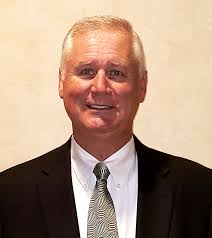Your retirement account can be a small lending institution. Private lending through your IRA or any other qualified retirement plan typically involves creation of a new promissory note, the purchase of an existing promissory note, either performing or non-performing, secured or unsecured.
A secured note adds a layer of security as it is backed by collateral. It guarantees the lender some type of property in case a default happens. On the other hand, an unsecured note typically carries a higher rate of interest as it is not backed by collateral.
Investing in private lending can also involve debt secured by mortgages or deeds of trusts. Let’s say a small lender or an individual invests in a note. The lender can then sell the note at a discount. This means that the IRA will be repaid with both interest and some of the principal.
Another option is to loan money from your retirement fund to a company via a promissory note, backed with corporate stock as the collateral. In this case, the level of risk the secured note carries is different. This is because the value of the collateral can increase or decrease depending on the success of the issuing company. In this category, there is an unsecured note too. An example is a bridge loan given to a company looking for debt financing.
Your options for private lending investments are:
- Secured or unsecured notes
- Performing and non-performing (or discounted) notes
- Residential and commercial mortgages and deeds of trusts
- Business loans (including microloans) and personal loans
- Automobile and equipment financing
- Equity participation loans
- Debt-financed notes
By investing your retirement fund into private lending, you are essentially turning your retirement account into a bank. You can make hard money loans, which are secured by real estate and also loans to purchase business equipment, automobiles, and anything else the borrower wants to purchase with the loan. The best part of loaning money from your retirement account is that you can set your own interest rate and origination fees.
Marketplace lending is another popular way of private lending. In this type of lending, the investments are often made indirectly in a pooled investment vehicle (PIV) or fund. This vehicle, then either invests in debt instruments or loans.
A quick rundown on private lending (secured and unsecured) through self-direction
Can you loan money to your children with your retirement account funds? Absolutely, not! The IRS defines this transaction as a prohibited transaction. Whether in private lending or any other investment with your retirement funds, you need to ensure that you are not transacting with a disqualified person.
Disqualified persons include the following:
- Your fiduciaries
- Your family members such as your spouse, lineal descendant, ancestor, any spouse of a lineal descendant
For more information, read this page on prohibited transactions.
In private lending through a self-directed retirement account, the investor chooses the borrower and is responsible for working out the loan terms with the borrower. In the case of a self directed IRA – once the details of the loan are documented and handed over to the custodian, the custodian executes the loan instructions on behalf of the IRA, and hold the assets. In the case of a self directed 401 k there isn’t a custodian, the investor is the trustee of their plan and executes the documents.
It is important to understand your state’s lending laws—conduct due diligence on market interest rates, reasonable loan terms, and maturity date. Most lenders include an amortization schedule in their notes.
Summary
A self-directed IRA or self-directed 401(k) can fund either secured (low risk) or unsecured loans (high risk). These decisions are taken by the investor whose retirement plan will lend the funds. While carrying out these transactions, you need to ensure that you are not transacting with a disqualified person. According to the IRS, this will be termed as a prohibited transaction, which can be penalized. An example of a prohibited transaction will be loaning money to yourself personally or your family members from your IRA.
A self-directed retirement plan allows you to invest in a wide array of alternative assets beyond mortgages and loans. Some of the non-traditional investment options, including private placements, real estate, and precious metals. All earnings and profits that your investment generates flow back into the retirement plan and grow tax-deferred until distribution or tax-free (if held in a Roth IRA). All expenses associated with the asset are paid by the plan.
The type of paperwork differs depending on the exact nature of your private lending investment.

Rick Pendykoski is the owner of Self Directed Retirement Plans LLC, a retirement planning company based in Goodyear, AZ. He has over three decades of experience working with investments and retirement planning, and over the last ten years has turned his focus to self-directed ira accounts and alternative investments. If you need help and guidance with traditional or alternative investments, call him today (866) 639-0066.




If you make a personal loan and the borrower defaults, is it simply a loss and impacts the value of your account? If someone has defaulted but later repays, can those funds still go back into the IRA as repayment?
Hi Laura, If the IRA makes a loan and the loan goes bad, it just reduces the amount of funds inside the IRA. If eventually the funds are repaid, then the IRA would benefit.